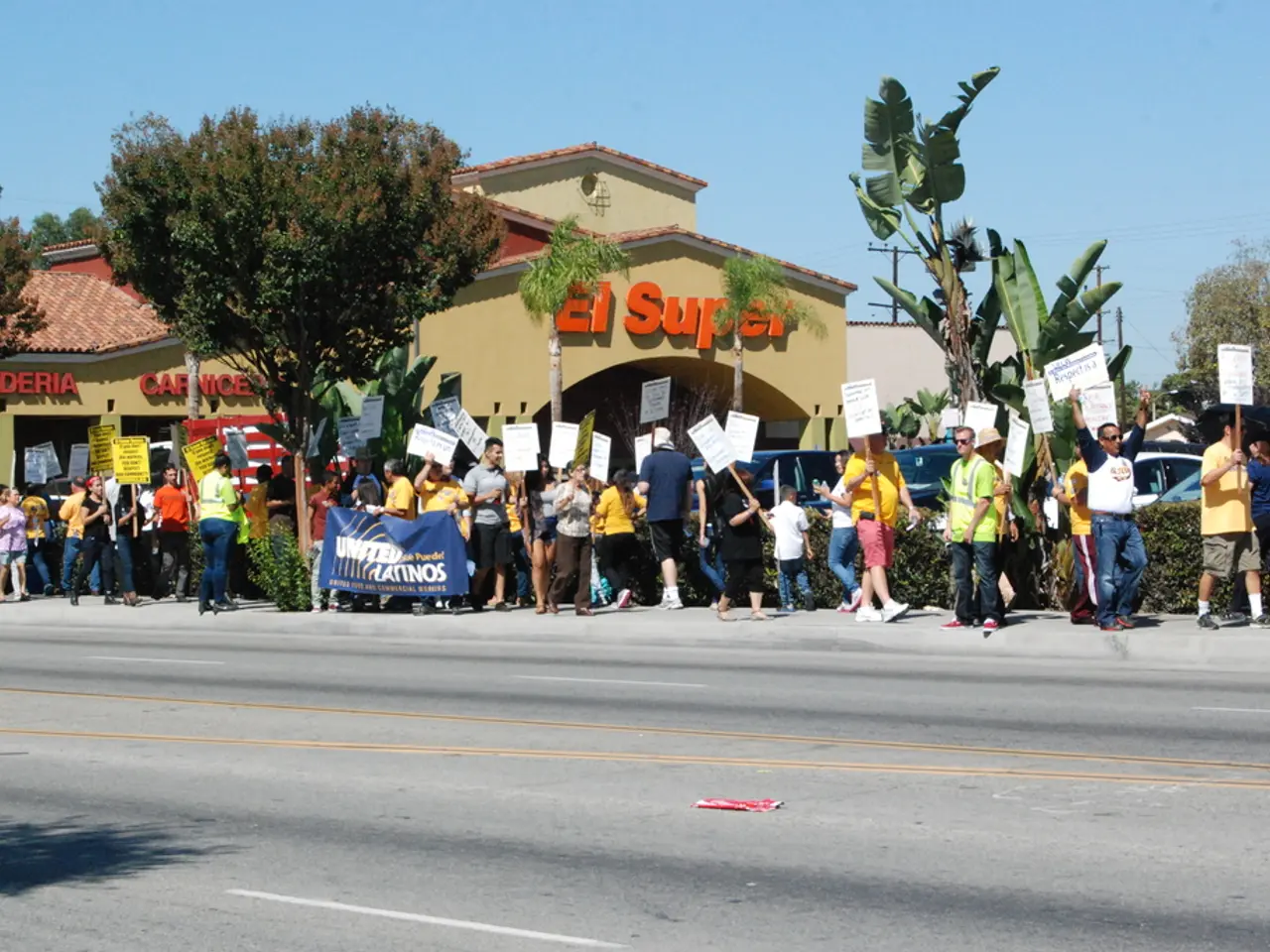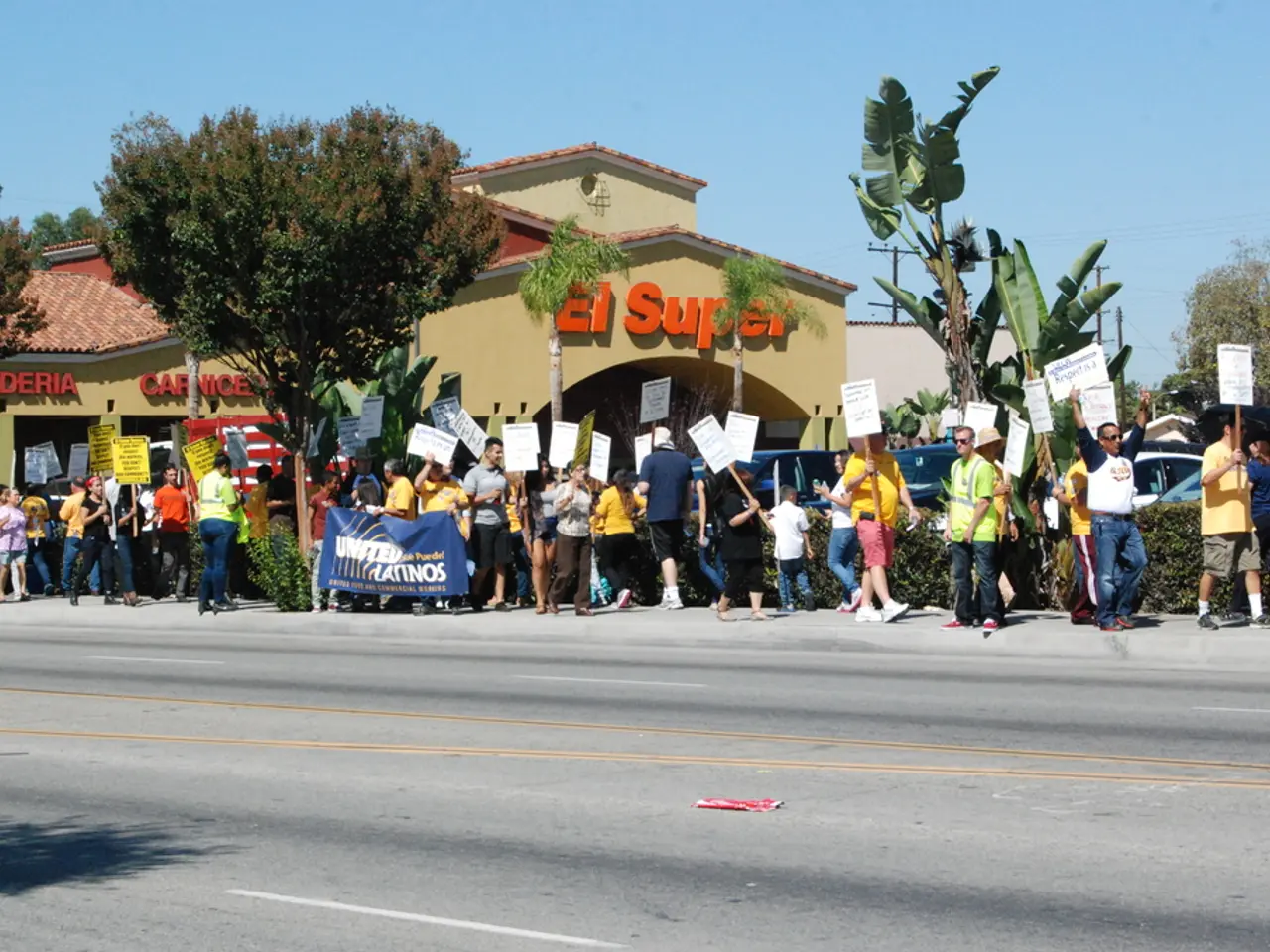Approaching its finale: The potential demise of the JCPOA for Iran and the global community.
The snapback mechanism, a critical aspect of the Joint Comprehensive Plan of Action (JCPOA), is a process that could potentially reimpose United Nations sanctions on Iran if the country violates its commitments under the agreement. Here's a breakdown of how it works:
1. **Trigger Process:** Any participant in the JCPOA (originally the P5+1: China, France, Russia, the UK, the US, and Germany) can submit a complaint to the UN Security Council if they believe Iran has breached its obligations under the agreement.
2. **Security Council Review:** Upon receipt of the complaint, the Council must take up the issue within 10 days. Any permanent member can propose a resolution to continue sanctions relief by dismissing the complaint.
3. **Automatic Snapback:** If the Security Council does not pass a resolution to maintain sanctions relief within 30 days, all previously lifted UN sanctions on Iran—including arms embargoes, travel bans, asset freezes, and restrictions on nuclear technology transfers—are automatically reinstated.
4. **Veto Immunity:** Notably, this mechanism cannot be blocked by a veto. If a permanent member vetoes the resolution to maintain sanctions relief, the result is not to prevent snapback, but rather to ensure it happens after the 30-day period.
5. **Binding on All States:** Once reinstated, all UN member states are legally obligated to implement these sanctions under Articles 25 and 103 of the UN Charter, regardless of their individual positions.
The potential consequences of invoking the snapback mechanism are far-reaching. For Iran, economic and trade restrictions could cripple its economy, and renewed diplomatic isolation could further isolate the country. Restrictions on Iran's nuclear activities would increase pressure on Tehran to comply or risk further penalties.
For the international community, compliance with the sanctions could vary in practice, and the move would likely exacerbate tensions between Western powers and Iran, as well as among the P5+1 members. The decision to trigger snapback is politically charged, as it represents a significant escalation and could close the door on future negotiations under the current framework.
The EU and the UK would be required to transpose these measures into their domestic legal systems and enforce them, including against companies and financial institutions. The process from complaint to full reinstatement of sanctions can take up to 65 days, reflecting the multi-step nature of the mechanism.
The survival of the nuclear non-proliferation regime depends not only on technical compliance but also on political foresight and institutional restraint. The choices made by Iran, P5+1, and Israel in the coming weeks will define not just the trajectory of Iran's nuclear program but the credibility of the Nuclear Non-Proliferation Treaty itself.
Diplomatic efforts are underway to resume nuclear negotiations, with White House special envoy Steve Witkoff and Iran's Foreign Minister Abbas Araghchi expected to meet in Oslo. The IAEA believes that Iran still possesses a significant stockpile of centrifuge parts. The United States entered the conflict in support of Israel on June 22, launching precision strikes with B2 bombers and Tomahawk missiles on Iran's key nuclear sites in Fordow, Natanz, and Isfahan.
[1] United Nations Security Council Resolution 2231, 2015. [2] Joint Comprehensive Plan of Action, 2015. [3] Treaty on the Non-Proliferation of Nuclear Weapons, 1968. [4] Arms Control Association, "The Snapback Mechanism in the JCPOA," 2015.
- The snapback mechanism in the JCPOA, if activated, could lead to the reinstatement of United Nations sanctions on Iran, including punitive measures such as arms embargoes, travel bans, asset freezes, and restrictions on nuclear technology transfers.
- Turkey, as a participant in the JCPOA, could play a significant role in the trigger process if it believes Iran has violated its obligations under the agreement, setting in motion the snapback mechanism.
- The Turkish government's position on the Middle East, particularly in relation to conflicts like Syria and the ongoing war-and-conflicts in the region, could influence its decision to submit a complaint to the UN Security Council.
- The potential consequences of the snapback mechanism extend beyond Iran, affecting the general-news and politics of the Middle East, as well as the policy-and-legislation of nations like Russia and the United States.
- The politics surrounding the snapback mechanism are complex, with the move representing a significant escalation and potentially closing the door on future negotiations under the current framework, much like the general-news and political landscape of Turkiye.




